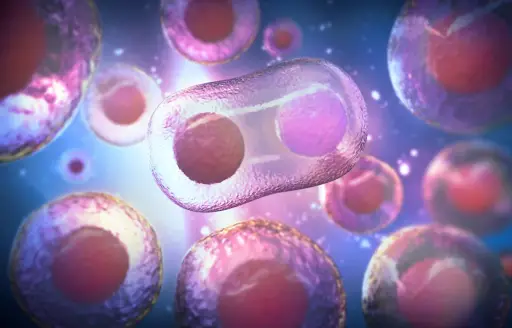
Stem Cell Therapy with Lyme disease
Lyme disease is a bacterial infection transmitted by ticks. Although the pathology can be successfully treated with antibiotics, it can damage internal organs. Borreliosis most often affects the nervous system. Heart and joint problems may also occur. Recovery during the natural course of the disease can take years. However, if you undergo treatment for Lyme disease with stem cells, you can achieve accelerated rehabilitation after this pathology.
In what cases can stem cell therapy be used?
In the active phase of Lyme disease, cell therapy is not necessary. Patients are treated with antibiotics. Patients also receive pathogenetic and symptomatic therapy.
After the pathogen is eliminated, residual effects of the disease may persist for a long time. Some patients develop irreversible functional defects, most often neurological disorders. In such situations, stem cells help solve the main problems of chronic Lyme disease.
Indications for cell therapy are complications associated with borreliosis:
- Neuroborreliosis (nervous system damage)
- Lyme encephalopathy (impaired cognitive functions of the brain due to borreliosis)
- Lyme carditis (heart disease)
- Lyme arthritis (joint disease)
Stem cells also help cure asthenic syndrome: constant weakness and rapid fatigue after an infectious disease.
It is worth noting that stem cell therapy is not currently a commonly accepted method of treating borreliosis. Cell therapy is used as part of clinical research to eliminate chronic forms and consequences of the disease. Since stem cells show good results, some clinics in developed countries are already offering this method of treatment to their patients.
How are stem cells used for Lyme disease?
The treatment is done with autologous cells. This means that the patient's own stem cells are used. They do not have to be taken from a donor, as is the case with blood cancer. This method of cell therapy is safer and more accessible to patients.
Bone marrow, umbilical cord blood, or peripheral blood can be used as a source of stem cells. Once the stem cells have been harvested, they can be cultured, as this increases their number, and then frozen. It is also possible to use them in a "fresh" form: immediately after collection, without preservation or cultivation.
The areas of administration of stem cells for Lyme disease syndrome may vary depending on the predominant symptoms and affected organs and tissues. The cells are most often administered intravenously. They have the ability to find areas of damaged tissue and stimulate regeneration in problem areas. This approach is used for asthenic syndrome and cardiovascular complications.
In cases of nervous system damage, it is more effective to administer stem cells into the cerebrospinal fluid. This procedure requires a lumbar puncture (puncture in the lumbar region).
In cases of joint damage, stem cells can be administered into the joint cavity. For this purpose, clinicians use cells that are isolated not only from blood and bone marrow, but also from adipose tissue obtained during liposuction.
Where can I get cell therapy?
Cellular regenerative therapy is a specialized treatment that is not available in all clinics. You may need to travel abroad to benefit from this innovative method.
You are welcome to use the medical tourism service Booking Health. On our website, you can choose a clinic that deals with cell therapy, find out prices, and make an appointment for treatment on your preferred dates. Please leave your request on the website to get a consultation. We will contact you and offer you stem cell treatment options abroad.